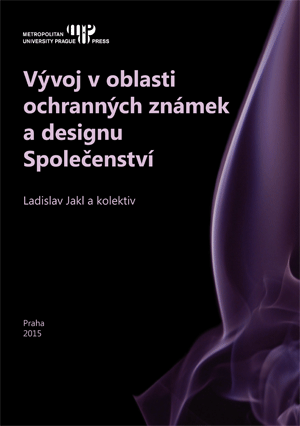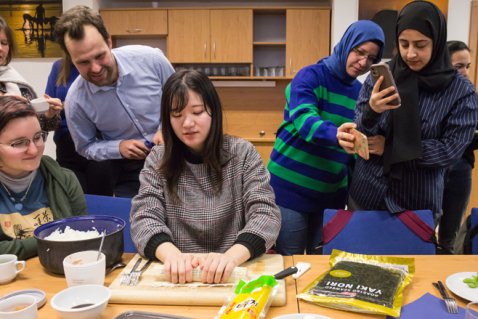JAKL, Ladislav. Vývoj v oblasti ochranných známek a designu Společenství.

1st ed. Prague: Metropolitan University Prague Press, 2015. ISBN 978-80-87956-17-5
Could be stated that research activity of Industrial Property Department and Institute for Legal Protection of Intellectual Property of Metropolitan University Prague and its external collaborators focusing on Community trademark and design development, has fulfilled its purpose. It has succeeded to analyze the latest development and to define modification proposals prepared constantly in the last years from factual point of view and also in terms of organizational arrangements that can provide intended modifications.
This collective monography concentrates papers from theorists, providing research in this field, as well as specialists, who work either in central state administration organ i.e. Industrial Property Office or as patent and trademark executive attorneys and doctoral students of Metropolitan University Prague.
Long-term cooperation with Slovakian Pavel Jozef Šafárik University of Law in Košice has brought issues of industrial property rights in context of copyright.
Certainly, fundamental papers analyze convergence of practice in European Union with focus on influence of non-distinctive elements in opposition proceeding of trademarks and convergence of practice related to harmonization of goods and services classification. The papers also study objections to public order under the terms of absolute grounds and court practice of relative grounds for refusal of Community trademark registration. Implemented is also comparison of solutions of those problems within the scope of European Union and national Industrial Property Office.
Beside does not even stay industrial designs. There are researched questions of refusal of design registration in Czech Industrial Property Office and Office for Harmonization in the Internal Market with its seat in Spanish Alicante and also there is outlined the development in this field.
Collection of research papers terminates by analysis of constitutional court complaints in trademarks and industrial designs cases. The conclusion shows, that constitutional court complaints make in the court agenda not whole 0,3% of the total amount of cases and at the same time 15% of those complaints are against decisions of the president of Industrial Property Office. Only one complaint against the decision of the president of Industrial Property Office was concluded by ruling, when Constitutional Court allowed the complaint. All others were refused by resolution as obviously unsubstantiated.
In general could be summarized, that team of creative professionals, who contributed in this collective monography, have shown highly valued outcomes, which can assess the development in the theory and practice in following years.



